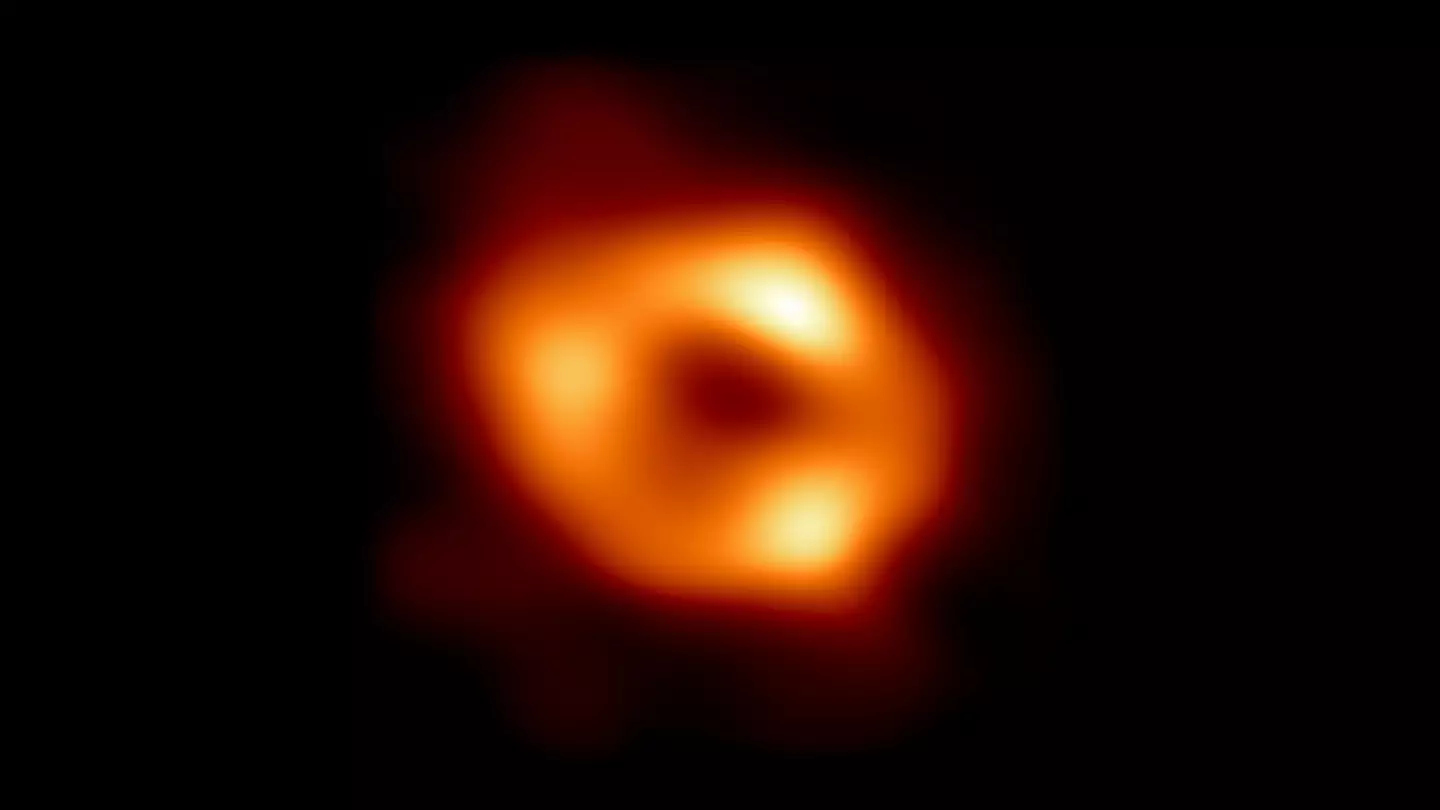
A telescope has captured a remarkable image of the enormous black hole at the centre of the Milky Way.
The image was captured by the Event Horizon Telescope, and is important as it's the first polarised image of the black hole in the Milky Way.
This could offer some fresh insight into the mysterious phenomena with new ways to observe black holes.
Advert
As for 'polarisation', this is the way that waves of light are 'twisted' and angled as they move.
For example if you use a polarised lens on a camera, this filters out light travelling at a certain angle, which could be useful for reducing glare.
But in terms of astrophysics, polarised light is important because it can be used to deduce things around magnetic fields, which are present in a given area.
This is big because magnetic fields can be tricky to measure, but contain a wealth of information about the area they come from.

The new data from the polarised photo also reveals evidence about what systems could be at the centre of the Milky Way.
Advert
It's also worth noting that this is not a picture of visible light, but of radio waves.
This isn't the first time that we've captured a polarised image of a black hole altogether, but it is the first one of the one at the center of our galaxy.
The other black hole we have done this for is called M87*- such a catchy name - and is located some 53 million light years from Earth.
It's also very, very big, with a mass some seven billion times that of the Sun. Yes, billion with a B.

But because we already images of M87*, that means that scientists are able to compare the two and see if they can notice any patterns or similarities.
Advert
And it turns out that there may well be some similarities.
In fact, it appears that the magnetic field for Sag A* is very similar to that of M87*.
This could indicate that there is a kind of 'jet' located at the center of the black hole in the Milky Way.
The images were taken by the Event Horizon Telescope, which observe a few days each year on several telescopes at the same time.
Advert
The 'event horizon' is a way for us to observe black holes. Essentially we can't 'see' black holes in the same sense that we can see other things, so we have to observe them by looking at the way they affect the objects around them.
Topics: News, Science, World News, Space
